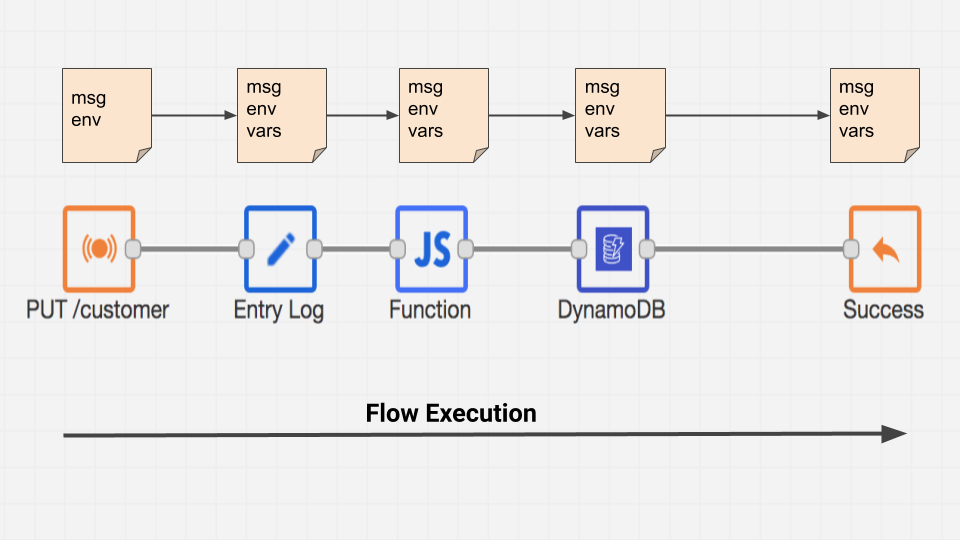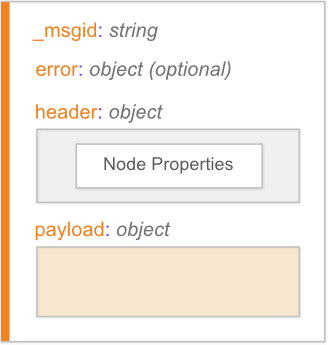A Kumologica API or service integration can be represented as a connected network of nodes, each node is responsible to take a message (request) and produce zero or many outputs, which in turn becomes the input to the next node. A Kumologica flow uses only 3 elements for the propagation and manipulation of data when moving from one node to the other.
1. Message — msg
2. Variables — vars
3. **Environment **— env

Message
Message (msg) object is a piece of information that node use to communicate with each other. Nodes work on the object their predefined logic and modify the object. The basic structure of the message object is as follows.

- _msgid: Unique execution identifier created for each execution.
- error: This property will hold the error being caught by the Error Node.
- header: This property is an object hold metadata added by a node. Information contained in this object should not be modified by other nodes.
- payload: This property is an object hold information added by the node. Unlike the header property, this property is meant to be mutable, and it has a special meaning for some nodes.
#tutorial #integration #aws #serverless #mulesoft #microservice #aws lambda #low code #kumologica

1.25 GEEK